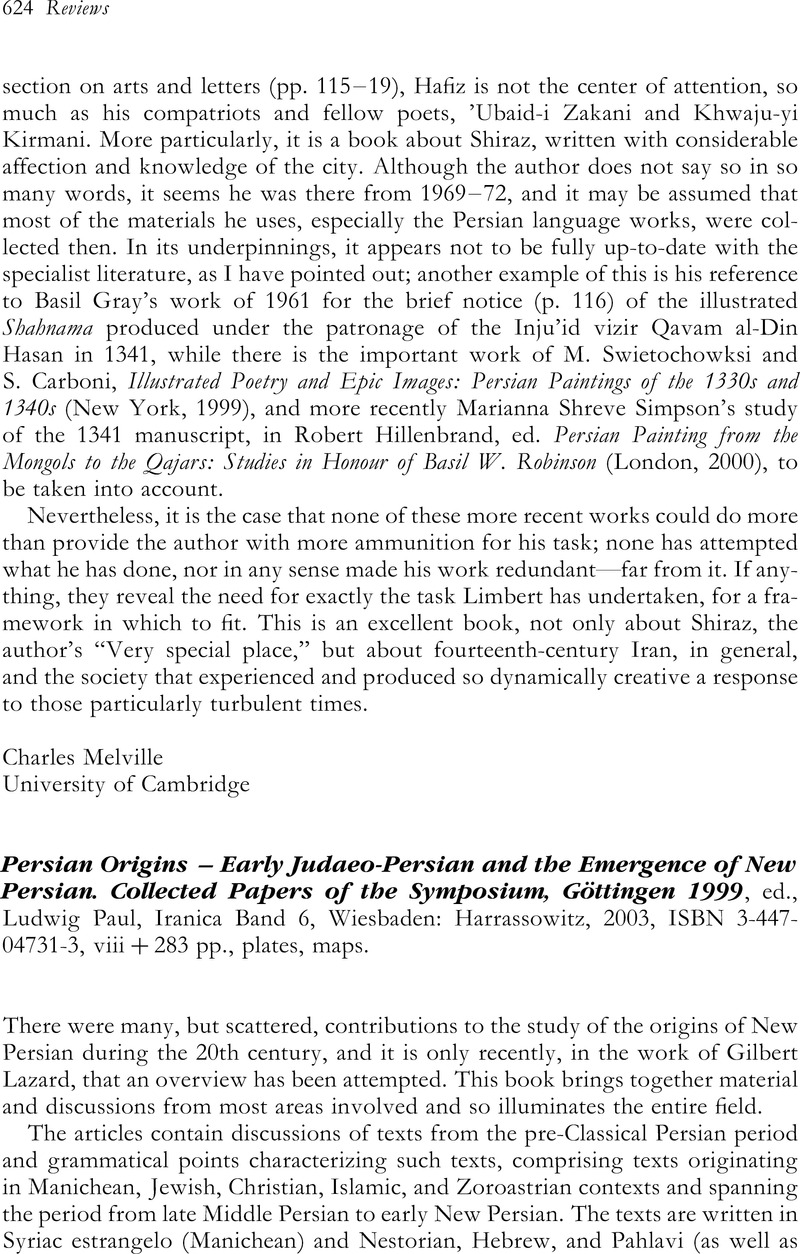Published online by Cambridge University Press: 01 January 2022

7 P. 67 n. 4: To the reviews of Jürgen Hampel's treatment of Pahlavi texts transcribead from Pāzand add Asmussen, J. P. and Skjærvø, P. O. in Wiener Zeitschrift für die Kunde des Morgenlandes 67 (1975), 306–8Google Scholar.
8 P. 70 n. 17: For the chronology of the change of ū > ī in Avestan manuscripts from Iran (from the 17th century on), see, e.g., Karl Hoffmann, “Zur awestischen Textkritik. Der Akk. Pl. mask. der a-Stämme,” in Boyce, M. and Gershevitch, I. (eds.), W. B. Henning Memorial Volume (London, 1970), 193Google Scholar (=Aufsätze zur Indoiranistik I (Wiesbaden, 1975), 280, with references.
9 Shapira, strangely, comments that Iranian dāta- meant “order, command, religion,” though it meant none of those, but “law.”